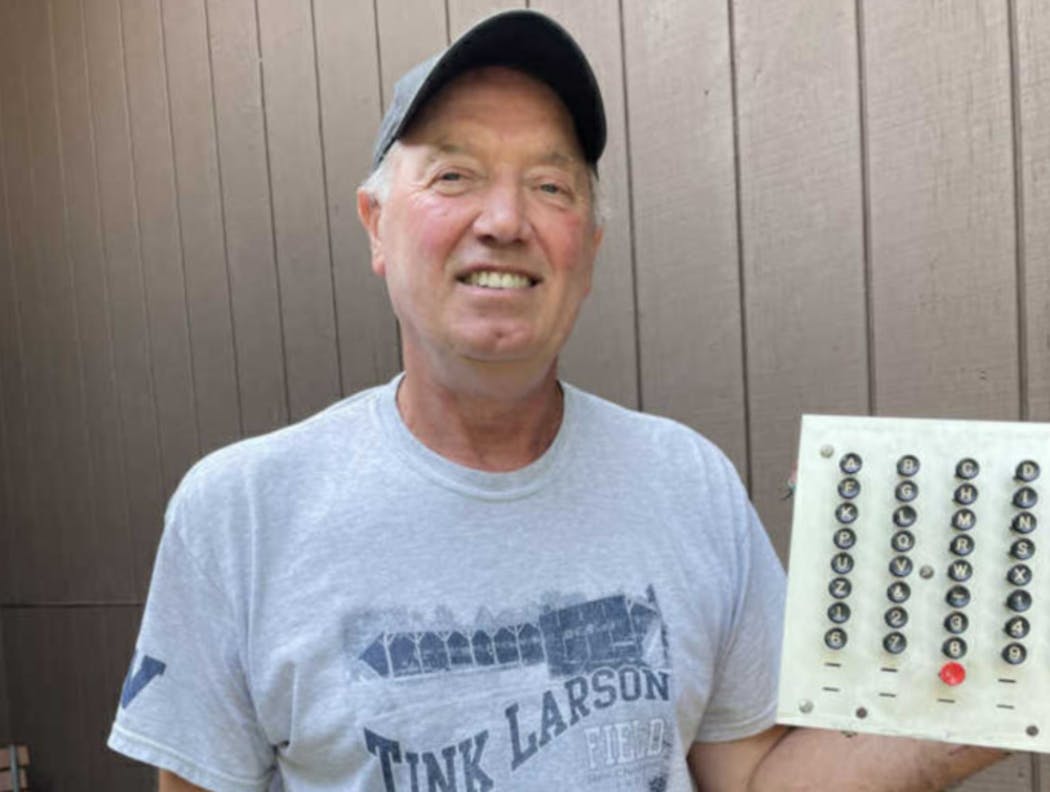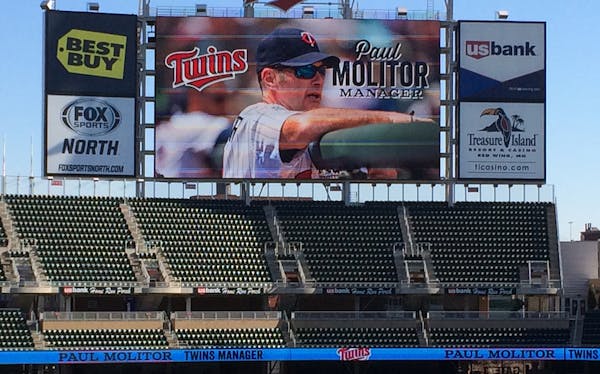The Twins have reached a deal with the Minnesota Baseball Authority to replace a Target Field scoreboard that is now in its 12th season, including a mini-season in 2020.
The estimated total cost for this extravagance will be $33 million. The first $7.6 million and roughly half of the total will come out of the Hennepin County sales tax collections that allowed the stadium to be built.
This is a boondoggle of the first order.
What is needed is merely a wiser, less-jumbled presentation of information on the game's participants — not a crisper picture of a dweeb trying to overachieve in the engagement department by putting a lady under the pressure of a very public proposal.
We haven't had the proposals this season, and hope springs that decision is permanent and not COVID-19-related.
There's no question about this:
The Twins could better serve the actual baseball fans in their audience by spending 50 grand or so to bring back the technology that enlightened the public without fail for 21 seasons (1961-81) at Met Stadium.
I say bring back an out-of-town scoreboard that shows pitching changes and the straightforward messages offered on the Twins-O-Gram.
This message board was a piece of magic that didn't require blaring music and nonsensical videos to tell fans something special had taken place. That was done with extra exclamation points.
"I might have used three after Rod Carew went over .400 on that Sunday in 1977,'' Al Kuehner said Friday. "Three told the fans, 'Look at this.' ''
Kuehner started with the grounds crew in 1974 and retired as a full-timer in 2020. He's still working part-time with the Target Field crew.
He was sent to the Met's version of a "scoreboard control room'' as a rookie and worked Twins and Vikings games there for the stadium's final eight seasons.
The surroundings were less ostentatious than the Twins are planning with the $7.6 million in public money.
"There was a 20-foot ladder that you climbed to a door behind the scoreboard,'' Kuehner said. "There was a windowless room, maybe six feet wide and 20 feet long. There would be three of us in there.''
The scoreboard operators were members of the grounds crew or stadium maintenance staff. Dick Ericson was in charge of both. Eddie Weller was the No. 2 guy.
"You could just walk in the stadium back then if there wasn't a game,'' Kuehner said. "I tracked down Eddie three or four times asking for a job.
"One day, they had an opening because Bill Becker was moving to Florida. My job interview was Eddie saying, 'OK, someone show this kid where to clock in.' "
Kuehner was 22, with a degree from Upper Iowa, and that led to scoreboard duty, after the regular shift with the grounds crew.
"I was young and good at climbing the ladder,'' he said. "Plus, with a college degree, they thought I could spell.''
There were eight lines on the Twins-O-Gram, with tiny bulbs to illuminate eight characters per line. Kuehner had saved a sample of this technology and showed it off when I visited Friday morning.
It was a smallish board with protruding buttons for the letters of the alphabet, plus the crucial exclamation point. There was also a hyphen for use when the eight-character limit interrupted a word.
"I hated the hyphen,'' Kuehner said.
My assumption was all the magic came from this single board. Not close.
"There were 64 boards in front of us, one for each character in the eight lines,'' Kuehner said. "You pushed in a letter, then went to the next board.
"We knew what the message was supposed to say, but we couldn't be 100% certain how it came out. We had no camera, no view of the board from our room.''
I was in attendance for a home opener when the season's first message was a simple, "HELLO! TWINS FANS.''
Except, there was no O included in HELLO.
"We had a phone and would get a call from the press box when we messed up,'' Kuehner said. "Jim Rantz would call if he was sitting there. Otherwise, it was the PR man, Tom Mee, or his assistant, Laurel Prieb.
"We feared a call from Tom. He had a temper.''
Mostly, it was Kuehner and Frank Shimkus on the message board and scoreboard, including out-of-town games that showed the score and current pitchers, by their number.
The third man stationed inside this 120 square feet was George Hanson.
"He was the guy looking out the little opening in the scoreboard and in charge of putting up balls and strikes,'' Kuehner said.
"George was the greatest. He had binoculars, but he didn't really need them he was so good at reading umpires. He was putting up a strike or a ball before the ump made his signal.''
One other quality for George: "He was an all-time great chain smoker,'' Kuehner said. "He'd finish 'em and flick the butt down into the bullpen, nonstop.''
Who would fill in on balls/strikes when Hanson missed a game?
"Don't know,'' Kuehner said. "He never missed one.''
What I say about these technical wizards at Target Field is "Bah, humbug.''
They probably won't even have to climb a ladder to get into their new, $7.6 million Scoreboard Control Center.
Reusse: Shaver was 'Voice of the North Stars' and an all-time great guy

Reusse: There's no doubt Finch is the right coach for the Wolves

Reusse: How bad are the White Sox? They made Twins look good.

Reusse's Tortured Columnist Department update: Yes, Vikings won the offseason





